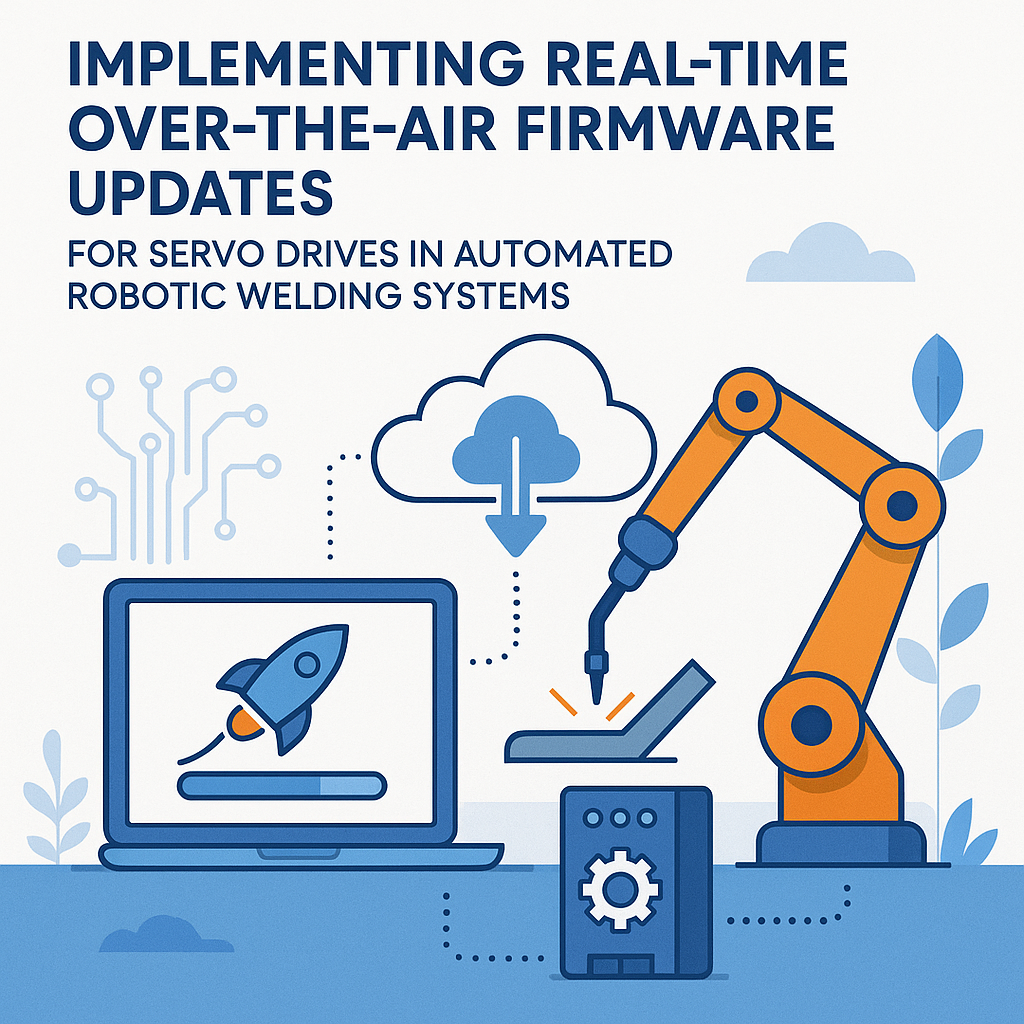Introduction
In the rapidly evolving field of automation, the ability to implement real-time over-the-air (OTA) firmware updates for servo drives in robotic welding systems is a game changer. This capability enhances the functionality, efficiency, and adaptability of automated systems, allowing manufacturers to respond swiftly to changing production needs and technological advancements. In this article, we will explore the importance of OTA updates, the challenges involved in their implementation, and best practices for ensuring a seamless update process.
The Importance of Real-Time OTA Firmware Updates
Real-time OTA firmware updates can significantly improve the performance of servo drives in robotic welding systems. Here are some key benefits:
- Enhanced Performance: Regular updates can optimize servo drive algorithms, improving speed, precision, and overall system performance.
- Bug Fixes: OTA updates can quickly resolve software bugs and vulnerabilities, ensuring the system runs smoothly and securely.
- Feature Additions: New functionalities can be added to servo drives without the need for physical access, increasing the system’s capabilities.
- Reduced Downtime: Updates can be scheduled during off-peak hours, minimizing disruptions to production.
Challenges of Implementing OTA Updates
While the benefits are substantial, several challenges must be addressed when implementing real-time OTA firmware updates:
- Network Reliability: A stable and secure network connection is critical for successful OTA updates. Intermittent connections can lead to update failures.
- Security Concerns: Ensuring the integrity and security of firmware updates is paramount. Unauthorized access can lead to malicious modifications.
- Compatibility Issues: Keeping all components of the robotic welding system compatible with the latest firmware can be complex, particularly in systems with multiple servo drives.
- Testing and Validation: Comprehensive testing is necessary to ensure that updates do not disrupt existing functionalities or introduce new issues.
Best Practices for Implementing OTA Updates
To successfully implement real-time OTA updates, manufacturers should consider the following best practices:
1. Establish a Robust Security Framework
Security should be a priority in the OTA update process. Implement encryption protocols and secure authentication methods to protect the firmware and prevent unauthorized access.
2. Utilize Version Control
Maintain a version control system for firmware updates. This allows for easy tracking of changes and rollbacks if an update introduces issues.
3. Implement a Reliable Update Mechanism
Choose a reliable and efficient OTA update mechanism that supports incremental updates. This minimizes the data transferred and reduces the update time.
4. Schedule Updates Wisely
Plan updates during non-peak hours or scheduled maintenance times to minimize disruptions. Notify operators in advance about upcoming updates.
5. Conduct Thorough Testing
Before rolling out updates, conduct extensive testing in a controlled environment to identify potential issues. This helps in ensuring that the updates will work seamlessly in the field.
6. Monitor Performance Post-Update
After deployment, closely monitor the performance of the servo drives to detect any anomalies. This real-time monitoring can help in quickly addressing any post-update issues.
Case Study: Successful Implementation
A leading manufacturer of robotic welding systems recently implemented real-time OTA firmware updates for their servo drives. By adopting a secure and efficient update mechanism, they achieved remarkable results:
- Improved Efficiency: The updates led to a 15% increase in operational efficiency due to optimized drive control algorithms.
- Reduced Downtime: Scheduled updates during maintenance windows minimized production interruptions, resulting in increased output.
- Enhanced Security: The implementation of robust security protocols significantly reduced the risk of cyber threats.
Conclusion
Implementing real-time over-the-air firmware updates for servo drives in automated robotic welding systems is not just a technological advancement; it is becoming a necessity in the competitive landscape of manufacturing. By embracing this capability, manufacturers can enhance system performance, reduce downtime, and ensure robust security. While challenges exist, adhering to best practices can facilitate a successful implementation. As technology continues to advance, the ability to quickly adapt and improve robotic systems will be crucial for staying ahead in the industry.



